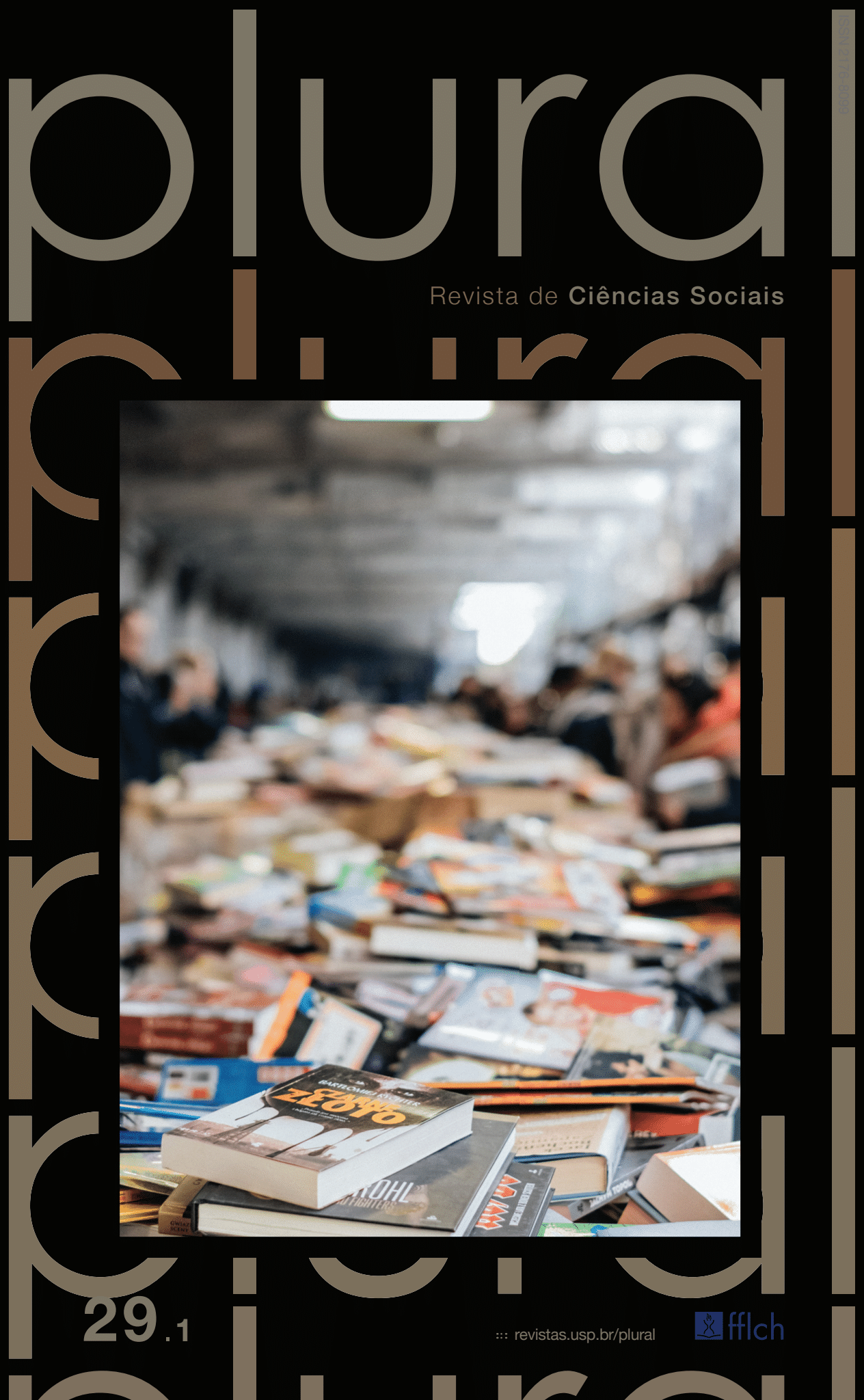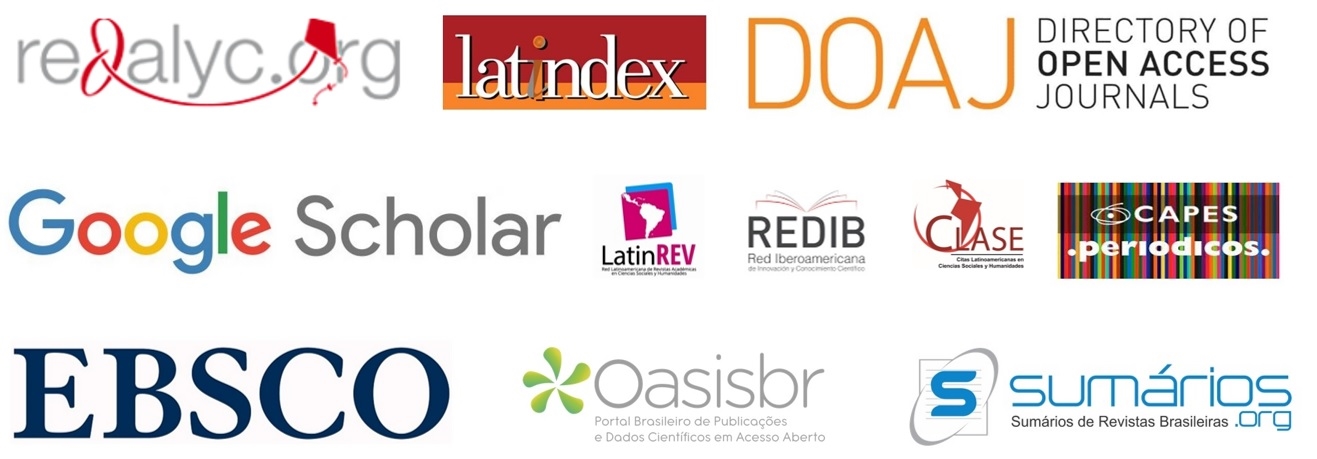New trends, more concentration? The patterns of enrollment distribution in Brazilian higher education between 2010 and 2019
DOI:
https://doi.org/10.11606/issn.2176-8099.pcso.2022.193022Keywords:
Institutional diversification, Higher education, Concentration, EnrollmentAbstract
In recent decades, there has been a global expansion of vacancies in higher education systems in several countries, which has been accompanied by a process of growing commodification in this segment of education. That is, the private sector has increasingly taken on more participation in its offer, and this has resulted, among other things, in an intensification of the phenomenon of institutional diversification. Foreign research on the subject focuses precisely on this diversification, but this article aims to analyze the Brazilian case also from the perspective of the concentration of enrollments in the last decade, which was the one with the greatest growth of emerging models of educational offer, such as the distance modality. The results point to the occurrence of a heterogeneous variation in the concentration of enrollments, in various types of courses, but for a homogeneous distribution in the two years analyzed, with a more accentuated concentration in the final year.
Downloads
References
ALTBACH, Philip G.; REISBERG, Liz; DE WIT, Hans (2017). Responding to massification: Differentiation in Postsecondary Education Worldwide. Boston: Center for International Higher Education, Boston College.
BALBACHEVSKY, Elizabeth, SAMPAIO, Helena (2017). “Brazilian Postsecondary Education in the 21st Century: A Conservative Modernization”. In: ALTBACH, Philip.G., REISBERG, Liz., DE WIT, Hans (orgs.). Responding to Massification. Global Perspectives on Higher Education. Rotterdam: SensePublishers, p. 155-65.
CARVALHAES, Flavio; RIBEIRO, Carlos Antônio Costa (2019). Estratificação horizontal da educação superior no Brasil: Desigualdades de classe, gênero e raça em um contexto de expansão educacional. Tempo social, São Paulo, v. 31, n. 1, p. 195-233. https://doi.org/10.11606/0103-2070.ts.2019.135035
CARVALHO, Cristina Helena Almeida de (2011). A mercantilização da educação superior brasileira e as estratégias de mercado das instituições lucrativas. Revista Brasileira de Educação, Rio de Janeiro, vol. 18, n. 54, p. 761-76. https://www.redalyc.org/articulo.oa?id=27528783012 (acesso em 30/11/2021).
CARVALHO, Cristina Helena Almeida de (2013). A política pública para a educação superior no Brasil (1995-2008): ruptura e/ou continuidade? Tese (Doutorado). São Paulo: Instituto de Economia da Universidade Estadual de Campinas. https://doi.org/10.11606/issn.2316-901X.v0i58p209-244
CORBUCCI, Paulo Roberto; KUBOTA, Luis Claudio; MEIRA, Ana Paula Barbosa (2016). Reconfiguração estrutural da educação superior privada no Brasil: nova fase da mercantilização do ensino. Instituto de Pesquisa Econômica Aplicada, Brasília/Rio de Janeiro. http://repositorio.ipea.gov.br/handle/11058/7336 (acesso em 30/11/2021).
HUISMAN, Jeroen (2016). “Institutional Diversity in Higher Education, Institutional Profiling.” In: SHIN Jung Cheol; TEIXEIRA, Pedro (orgs). Encyclopedia of International Higher Education Systems and Institutions. Dordrecht: Springer. https://doi.org/10.1007/978-94-017-9553-1_32-1
LEAL, Natacha Simei; SANABRIA, Guillermo Vega; CARIAGA, Diógenes Egídio (2021). “Novas universidades, novos campi, novas antropologias: docências, alteridades e expansão do Ensino Superior no Brasil”. In: LEAL, Natacha Simei; SANABRIA, Guillermo Vega; CARIAGA, Diógenes Egídio (orgs.). Anuário Antropológico, Brasília, v. 46 n. 1, p. 25-38. https://doi.org/10.4000/aa.7652.
MARTELETO, Letícia; MARSCHNER, Murillo; CARVALHAES, Flavio (2016). Educational Stratification after a Decade of Reforms on Higher Education Access in Brazil. Research in Social Stratification and Mobility, v. 46, part b, p. 99-111. http://dx.doi.org/10.1016/j.rssm.2016.08.004
PRATES, Antônio Augusto Pereira (2010). Ampliação do Sistema de Ensino Superior nas Sociedades Contemporâneas no final do séc. XIX: os modelos de mercantilização e diferenciação institucional - o caso brasileiro. Estudos de Sociologia, São Paulo, v. 15, n. 28, p. 125-46. https://periodicos.fclar.unesp.br/estudos/article/view/2554 (acesso em 30/11/2021).
SAMPAIO, Helena (2011a). O setor privado de ensino superior no Brasil: continuidades e transformações. Revista Ensino Superior Unicamp, Campinas, n. 4, v. 5, p. 28-43.
SAMPAIO, Helena (2014b). Diversidade e diferenciação no ensino superior no Brasil: conceitos para discussão. Revista Brasileira de Ciências Sociais, São Paulo, v. 29, n. 84, p. 43-55. https://doi.org/10.1590/S0102-69092014000100003.
SHAVIT, Yossi; ARUM, Richard; GAMORAN, Adam (2007). Stratification in Higher Education: A Comparative Study. Bibliovault OAI Repository, the University of Chicago Press.
TEIXEIRA, Pedro Nuno; ROCHA, Vera; BISCAIA, Ricardo; CARDOSO, Margarida Fonseca (2012). Competition and diversity in higher education: an empirical approach to specialization patterns of Portuguese institutions. Higher Education, v. 63, n. 3, p. 337–52. https://doi.org/10.1007/s10734-011-9444-9
Downloads
Published
Issue
Section
License
Copyright (c) 2022 Política de direitos compartilhados

This work is licensed under a Creative Commons Attribution-NonCommercial-ShareAlike 4.0 International License.
Ao submeter seu trabalho à Plural, o autor concorda que: o envio de originais à revista implica autorização para publicação e divulgação, ficando acordado que não serão pagos direitos autorais de nenhuma espécie. Uma vez publicados os textos, a Plural se reserva todos os direitos autorais, inclusive os de tradução, permitindo sua posterior reprodução como transcrição e com devida citação de fonte. O conteúdo do periódico será disponibilizado com licença livre, Creative Commons - Atribuição NãoComercial- CompartilhaIgual –, o que quer dizer que os artigos podem ser adaptados, copiados e distribuídos, desde que o autor seja citado, que não se faça uso comercial da obra em questão e que sejam distribuídos sob a mesma licença (ver: http://www.creativecommons.org.br/).







